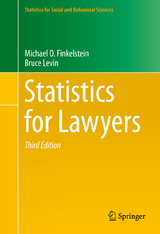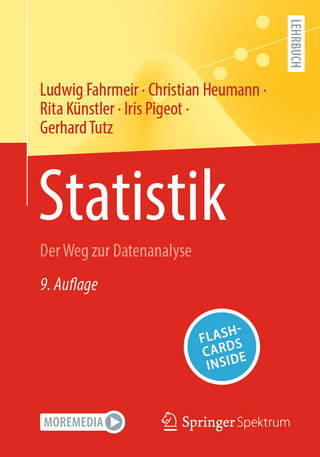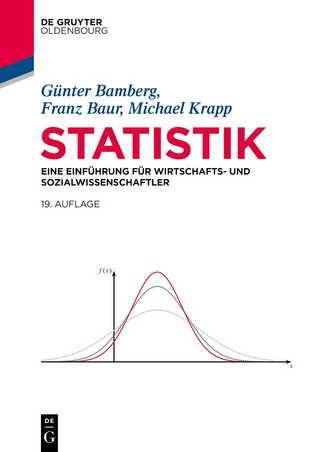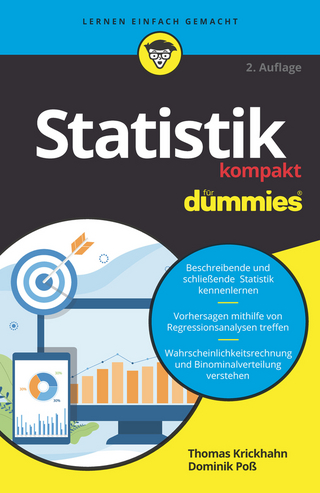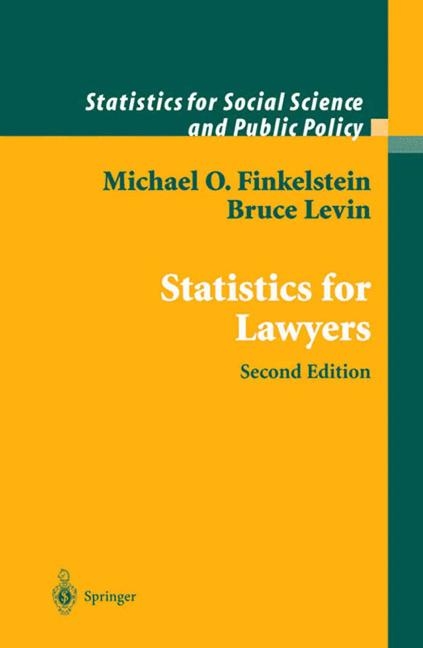
Statistics for Lawyers
Seiten
2007
|
2nd ed. 2001. Corr. Printing 2007
Springer-Verlag New York Inc.
978-0-387-95007-5 (ISBN)
Springer-Verlag New York Inc.
978-0-387-95007-5 (ISBN)
- Titel erscheint in neuer Auflage
- Artikel merken
Zu diesem Artikel existiert eine Nachauflage
Designed to introduce law students, law teachers, practitioners, and judges to the basic ideas of mathematical probability and statistics as they have been applied in the law, this book consists of sections of exposition followed by real-world cases and case studies in which statistical data have played a role.
Designed to introduce law students, law teachers, practitioners, and judges to the basic ideas of mathematical probability and statistics as they have been applied in the law, the book consists of sections of exposition followed by real-world cases and case studies in which stastical data have played a role. Readers are asked to apply the theory to the facts, to calculate results (a pocket calculator is sufficient), and to explore legal issues raised by quantitative findings, while the author's own calculations and comments are given in the back of the book. The cases and case studies reflect a broad variety of legal subjects, including antidiscrimination, mass torts, taxation, school finance, identification evidence, preventive detention, handwriting disputes, voting, environmental protection, antitrust, and the death penalty. The first edition has been used in law, statistics, and social science courses, and in 1991 was selected by the University of Michigan Law Review as one of the important law books of the year. This second edition includes many new problems reflecting current developments in the law, including a new chapter on epidemiology.
Designed to introduce law students, law teachers, practitioners, and judges to the basic ideas of mathematical probability and statistics as they have been applied in the law, the book consists of sections of exposition followed by real-world cases and case studies in which stastical data have played a role. Readers are asked to apply the theory to the facts, to calculate results (a pocket calculator is sufficient), and to explore legal issues raised by quantitative findings, while the author's own calculations and comments are given in the back of the book. The cases and case studies reflect a broad variety of legal subjects, including antidiscrimination, mass torts, taxation, school finance, identification evidence, preventive detention, handwriting disputes, voting, environmental protection, antitrust, and the death penalty. The first edition has been used in law, statistics, and social science courses, and in 1991 was selected by the University of Michigan Law Review as one of the important law books of the year. This second edition includes many new problems reflecting current developments in the law, including a new chapter on epidemiology.
Describing Data.- Inferring Causation.- How to Count: Permutations and Combinations.- Elements of Probability.- Some Probability Distributions.- Statistical Inference for Two Proportions.- Comparing Multiple Proportions.- Comparing Means.- Combining Evidence Across Independent Strata.- Sampling Issues.- Survival Analysis.- Nonparametric Methods.- Regression Models.
| Reihe/Serie | Statistics for Social and Behavioral Sciences |
|---|---|
| Zusatzinfo | biography |
| Verlagsort | New York, NY |
| Sprache | englisch |
| Maße | 156 x 234 mm |
| Gewicht | 2400 g |
| Themenwelt | Mathematik / Informatik ► Mathematik ► Statistik |
| Mathematik / Informatik ► Mathematik ► Wahrscheinlichkeit / Kombinatorik | |
| Recht / Steuern ► EU / Internationales Recht | |
| Recht / Steuern ► Wirtschaftsrecht ► Handelsrecht | |
| Sozialwissenschaften ► Soziologie ► Empirische Sozialforschung | |
| ISBN-10 | 0-387-95007-9 / 0387950079 |
| ISBN-13 | 978-0-387-95007-5 / 9780387950075 |
| Zustand | Neuware |
| Haben Sie eine Frage zum Produkt? |
Mehr entdecken
aus dem Bereich
aus dem Bereich
Eine Einführung für Wirtschafts- und Sozialwissenschaftler
Buch | Softcover (2022)
De Gruyter Oldenbourg (Verlag)
29,95 €
